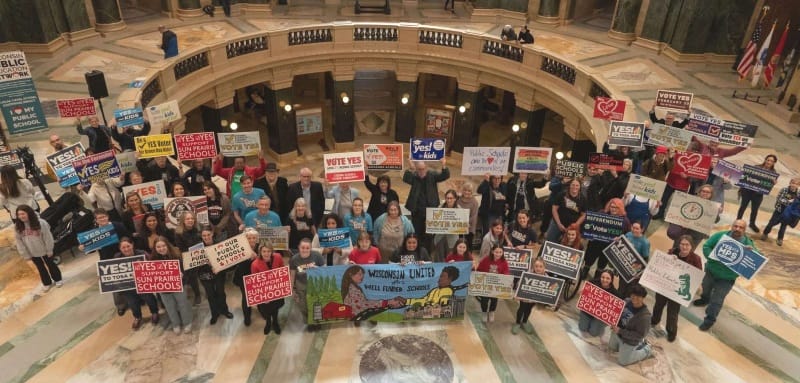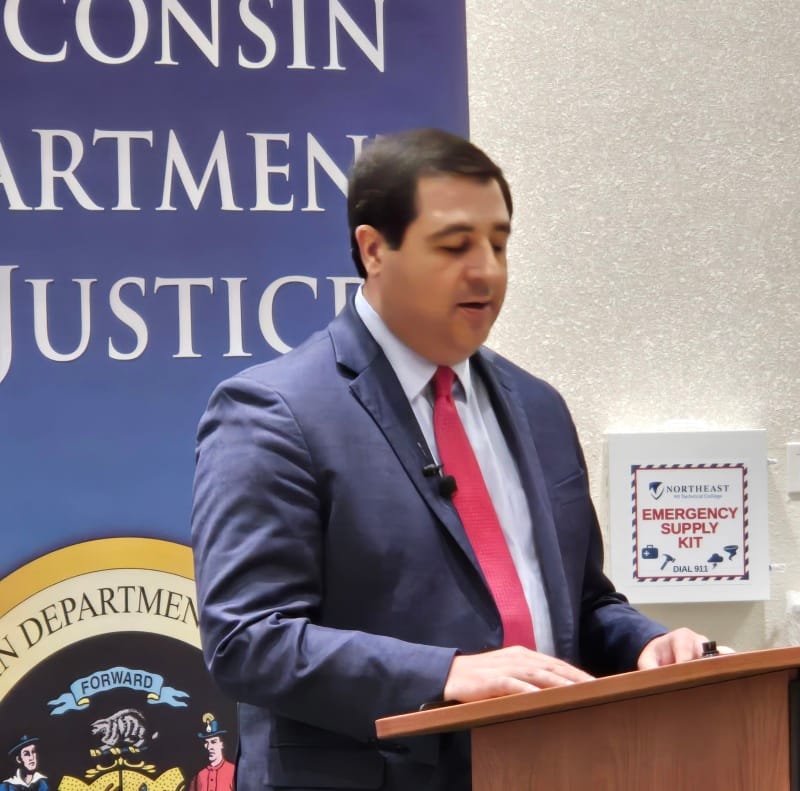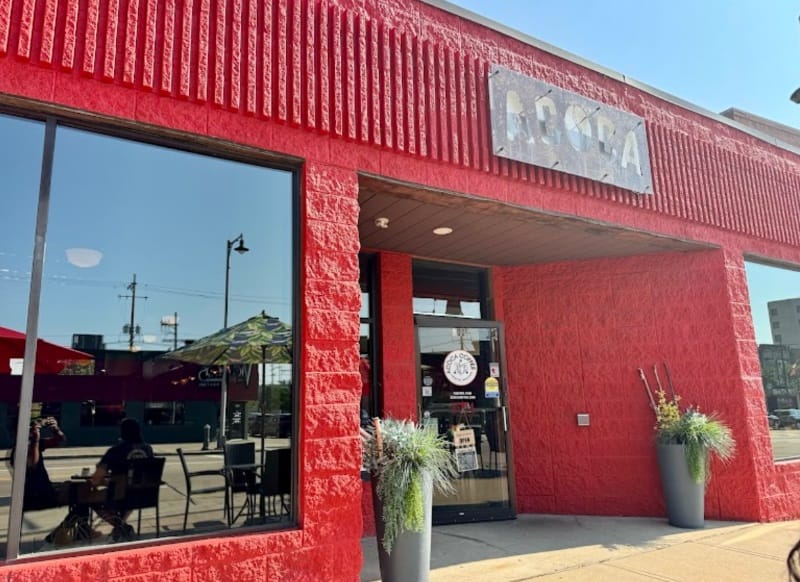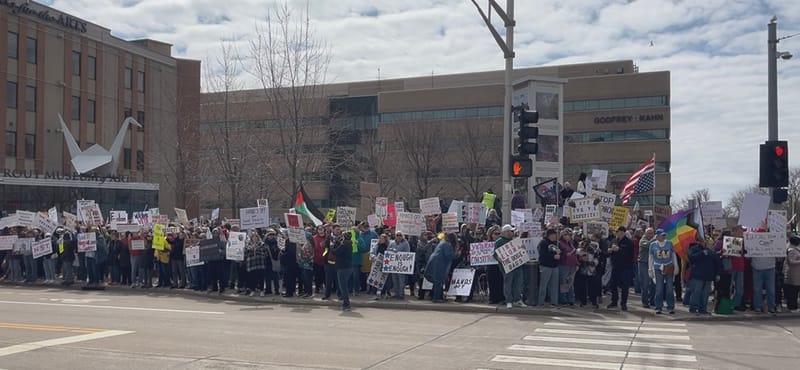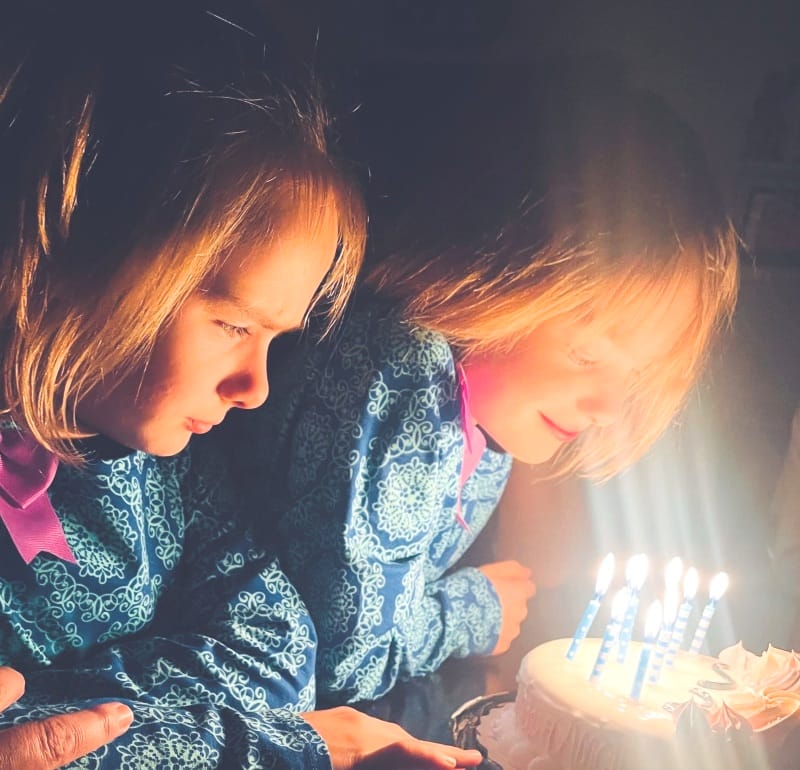School leaders express pride, frustration, concern at Capitol
The transfer of public money to private schools is contributing to the underfunding of public schools. The cost of the private school choice program was over $780 million for just this school year.
In celebration of Public Schools Week, parents, students, superintendents, board members, referendum team leaders, and state leaders gathered at the Capitol in Madison to share accomplishments and advocate for a state budget that fully funds public schools.
The transfer of public money to private schools is contributing to the underfunding of public schools. The cost of the private school choice program was over $780 million for just this school year. The special needs voucher for private schools is currently funded at 90 percent, while public schools are currently reimbursed at approximately 29 percent.
Among the speakers, Danae Walcisak of the Prentice School District, said the lack of funding is affecting their whole community. To help make ends meet, board members have volunteered to drive the school bus. The art teacher held fundraisers to purchase basic art supplies. The tech ed teacher used his own money to buy a welding machine for his students.
“This is the Year of the Kid,” Walcisak said. “I hope it’s the year of the rural kid.”
Heather DuBois Bournenane, Executive Director of Wisconsin Public Education Network, organized the event. In her opening remarks, DuBois Bournenane reported that over two-thirds of Wisconsin’s 421 public school districts have held school referendums since the passage of the last state budget, “which woefully failed to meet the needs of Wisconsin’s children.” Not all referendums passed, widening gaps around the state in educational programming and learning opportunities.
A hand-written scroll of all referendums in the last two years was unfurled from the third floor of the Rotunda. It draped down two floors and into the hall.

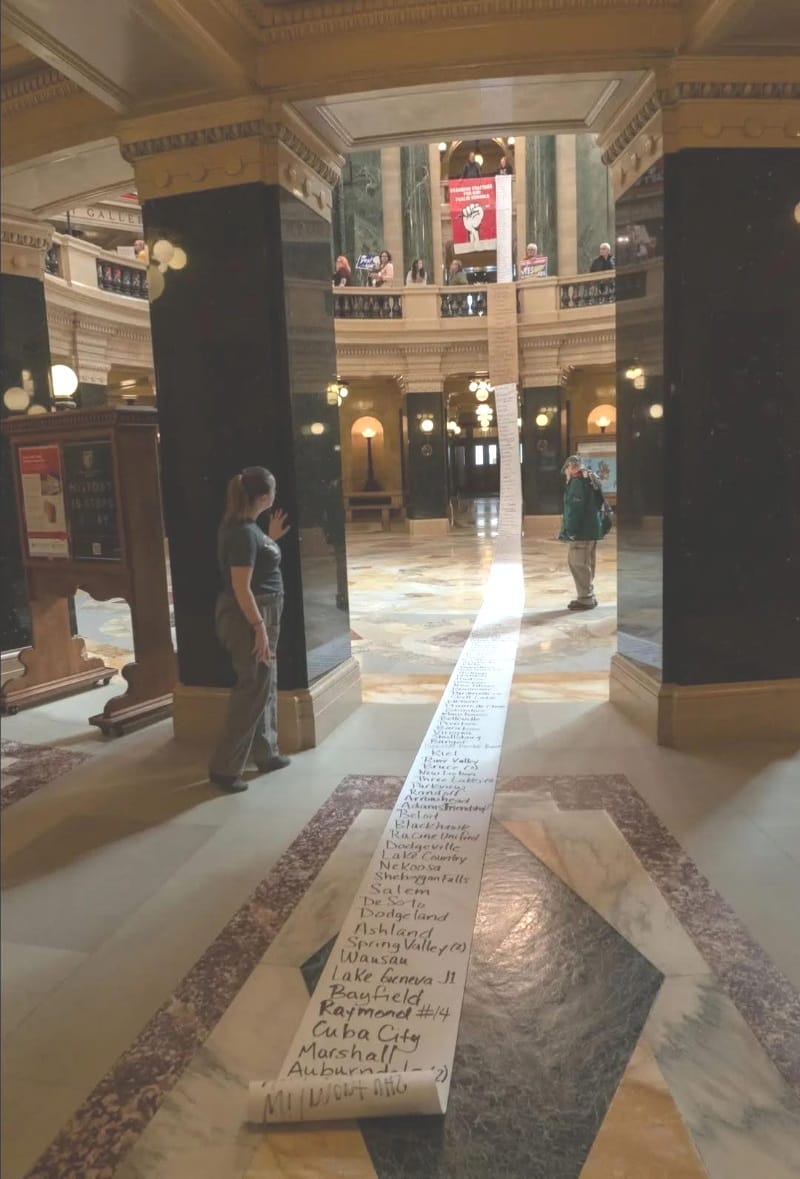
Left, Superintendent of Public Instruction Jill Underly; right, a scroll listing all the districts that needed referendums to fund their schools
There are two kinds of referendum. Capital referendums allow borrowing to build facilities or additions. Operational referendums are generally for a limited number of years and cover basic expenses such as salaries, utilities, curriculum, etc.
Operational referendums have become more common since 2010 when the legislature stopped funding schools to keep pace with inflation. Schools would have an additional $3,300 per student if funding kept up with inflation this year, making operational referendums unnecessary.
Kendra Koeppen, Executive Director of the Kenosha Education Association, said lawmakers forced the district into an impossible situation by underfunding public schools for years. The operational referendum for the Kenosha Unified School District fell short of being approved on Feb. 18. The KUSD is facing a $19 million shortfall next year.
Jim Murphy, a Mauston community member, proudly announced that the School District of Mauston’s operational referendum was approved in February, keeping the district afloat for the next four years. When the previous two referendums failed to pass, the Mauston School Board considered dissolving the district in the spring of 2027.
Murphy said that educating the community on how schools are funded and what the benefits would be for students was key to passing the referendum. Unfortunately, unless state funding increases, they will need another referendum in four years.
The story of Adams-Friendship School District is familiar to many rural districts. Their low revenue cap means they cannot offer the same educational opportunities as schools with higher revenue caps. Funding via referendum has become necessary. The district passed an operational referendum in 2023 and is proposing two referendum questions on the April ballot, one operational and one capital. The superintendent said that the funding formula used to calculate state funding must be fixed.
Many of the speakers also expressed concerns about special education funding. If the special education reimbursement rate returned to at least 60 percent as it was in 1980, districts would be better able to fund the education of all students. Most districts transfer approximately 10 percent of their general funds to fill the special education funding gap.
Governor Evers labeled this year “The Year of the Kid.” His proposed budget includes record investments in universities and tech colleges, K-12 schools, mental health, literacy, and special education (60%). The budget process continues in the Joint Finance Committee. It is not uncommon for the JFC to disregard the Governor’s proposal altogether and start from a zero budget.
The public may contact their elected officials throughout the budget process. The JFC will hold public listening sessions in April. Once passed by the JFC, the budget process will proceed to the Assembly and Senate to be amended and passed. Governor Evers can then sign, veto all, or veto in part. If a new budget is not passed by July 1, the state continues operating under the previous budget.
Superintendent of Public Instruction Jill Underly addressed the public education advocates and pledged to ensure Wisconsin’s Constitutional promise of a quality public education for all. She encouraged everyone to continue to show up and help Wisconsin move forward.


